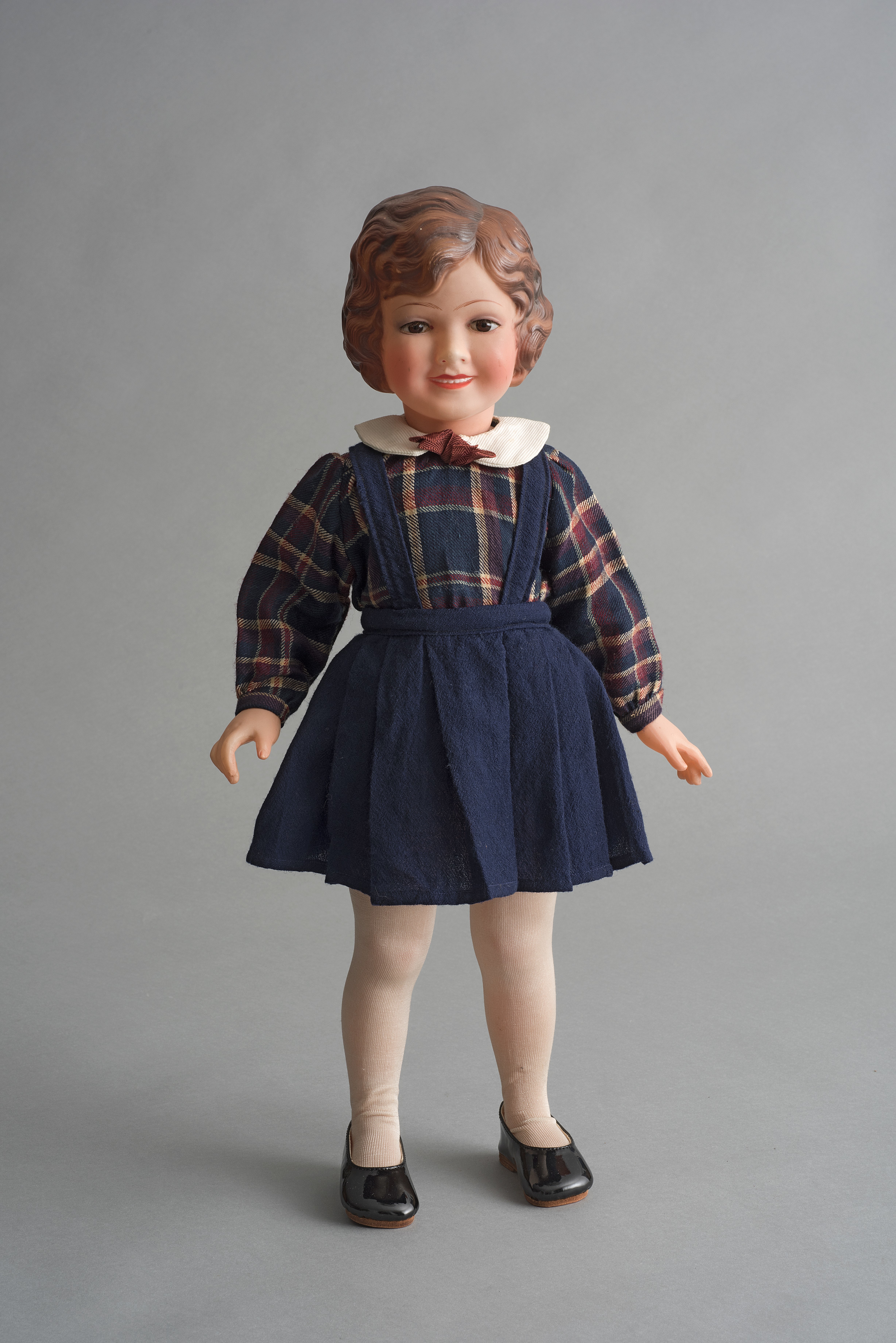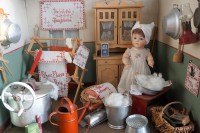Die Puppe ist aus Celluloid und wurde in Frankreich von der Firma Petitcollin hergestellt. Sie trägt für die Zeit typisch französische Kleidung. Karrierte Bluse mit weißen Kragen, dazu einen blauen Rock mit Trägern. Sie tägt lange einzelne Feinstrümpfe und dazu schwarze Lackschuhe mit Ledersohle. Die Puppe ist 50 cm hoch und hat einen beweglichen Kopf mit gemalten Haaren, bewegliche Arme und Beine. Auf dem Rücken befindet sich eine Markung " Made in France", p.c.p. 48, Adlerkopf ur Seite blickend im Achteck.
Die Firma Petitcollin wurde 1860 erstmals erwähnt. Sie besaß Fabrikationswerke in Ètain, Meuse; Lilas, Seine; Cusset und Paris.
Das Celluloid der Firma Petitcollin war aus einem Azetat namens "celöid" gemacht.
1904 wurde als Firmenlogo der zur Seite blickende Adler (Téte d´Aigle) eingetragen und registriert.
1907 inseriert die Firma "Bébés et popées". 1930 stellte die Firma dann eine Celluloidpuppe namens Petit Colin her.
en

